7 Undervalued ways a business can use a blog
What are you trying to accomplish with your content?

When choosing a restaurant, there are several factors to consider, such as the type of food, overall cost, distance, and more.
In the same way, when a business chooses to pursue a content strategy, the first thing they must recognize is that blogs have variety too. A company can use a blog in many ways depending on its goals, budget, and timeframe.
This article will dive into 7 of these possibilities.
Type 1: Education
What is it: The purpose of an educational blog is to introduce your customers to your product and train them on how to use it best.
These articles usually take the form of tutorials, how-to's, and general best practice advice. You can also include case study content so long as you explicitly state the lessons for readers.
Example: The Ghost Resources collection is a perfect example of an educational blog for business. The content is organized into four categories that reflect the lifecycle of their ideal customer: from building their first website to optimizing their revenue streams.
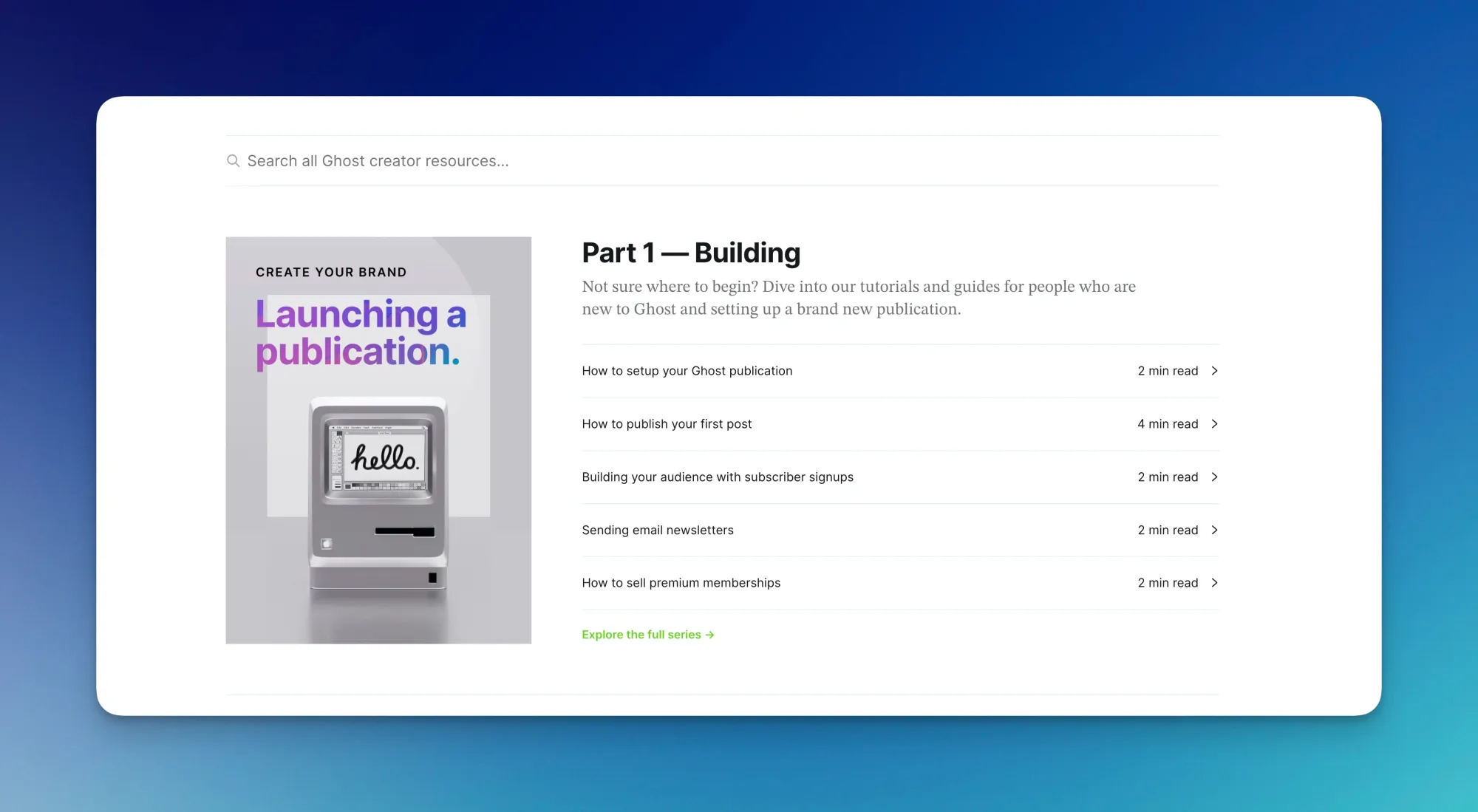
Requirements: To execute this strategy, you need a subject matter expert on your offer or product, a person who deeply understands your target audience, and a gifted writer. Sometimes you can find all three in a single person.
Most of the time, you'll use a writer who interviews the product and audience experts to gather what they need.
Type 2: Social Proof
What is it: Social-proof blogs demonstrate the value of your business to strangers. These take the form of case studies, interviews, and customer success stories. The point isn't to explain how your product or offer works, although that may be a byproduct, but instead to highlight the results one can achieve by using it.
Example: The I Am A Creator series by ConverKit stands head-and-shoulders above the competition in this regard. The authors profile users of the software tool and celebrate their (often massive) success.
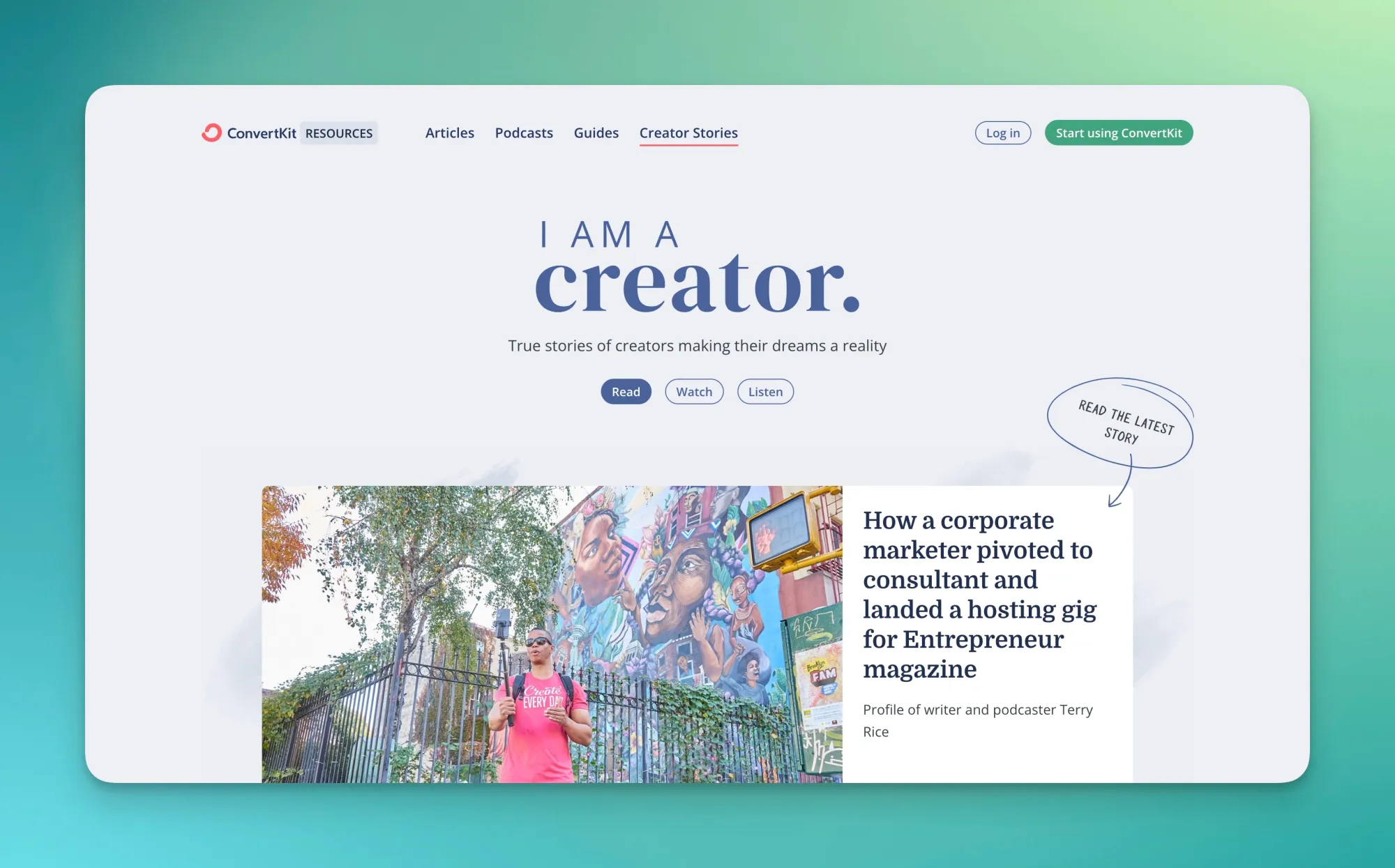
Now, is all of their success due to using ConvertKit? No. But the implication remains: if you want to be where these people are, use what they did.
Requirements: Of all the types we will cover in this article, this can be one of the most labor-intensive. To create a solid case study or interview content, you need a content creator who knows this format and can align it with your specific goals.
You'll also need a pool of willing participants who want to share their stories. One bonus of this format is that it translates well into other mediums like video, podcasts, and more.
Type 3: Recruitment
What is it: Although most blogs are customer-facing, that doesn't always need to be the case. One trend gaining steam, especially as the battle for talent grows more intense, is content geared toward potential hires.
These blogs or videos showcase the company culture, peel back the curtain on high-profile projects, and publicly reward A-players in the hopes of recruiting more of them.
Example: Two individual examples I want to share are the following:

Both articles give an insider point-of-view of what it's like to work for these companies. Readers get a sense of the atmosphere, values, and personalities they could encounter. Even though human resource departments usually maintain these assets, it doesn’t feel that way — which can be a big plus for those looking for a less corporate experience.
Requirements: Projects like a recruitment blog are typically a joint effort between HR and marketing. Human resources will set the goals, marketing will create the content, and together they'll iterate along the way. It's a highly strategic process that can lead to incredible talent finds.
Type 4: Updates
What is it: Businesses must strike a delicate balance between overcommunicating with their customers and ghosting them. An updates channel or changelog can be a great middle ground.
It allows you to publicly communicate important product updates, company milestones, and more without crowding out your standard marketing materials. While this is more common with software companies, the practice can work with any modern entity.
Example: Ghost’s Changelog is a model worth emulating for a few reasons. Both the content and design are simple, clean, and direct. The monthly publishing cadence gives customers a sense that things are continually improving and that their requests are being heard and acted upon.
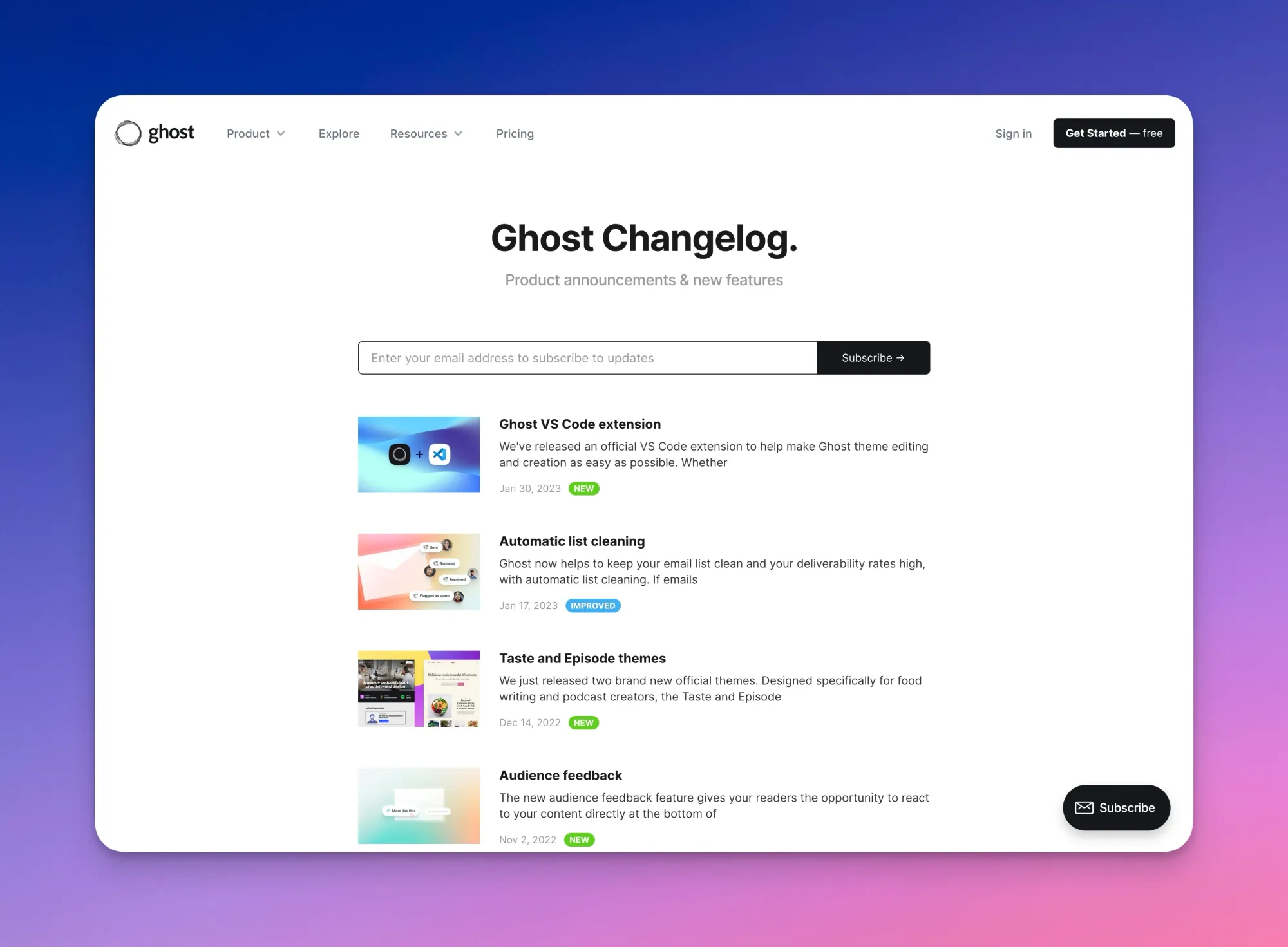
Requirements: Although marketing will have the final say on what gets published when, this channel should be spearheaded by a senior professional who is closest to the product or service.
In technical companies, you can expect someone in the product hierarchy to spearhead these posts. In service offerings, it's common for a c-suite official to guide what goes out. With either option, carving out dedicated time can be the biggest challenge for this content strategy.
Type 5: Lead Generation
What is it: Lead gen is easily the second most popular type of marketing content available on the web. It's a powerful tool that takes on many variations but is always guided by a singular purpose: convert visitors into customers.
Most often, you'll see lead-gen blogs filled with problem-aware articles, meaning they help readers better understand their challenges and the landscape of available solutions.
Example: The SEO content on Ahref’s blog is a great example of how to do lead generation without making it feel salesy or pushy. They use a simple formula: identify a marketing issue, show how to solve it using their tool, and invite readers to take the next step (e.g., free trial, upgrade, download).
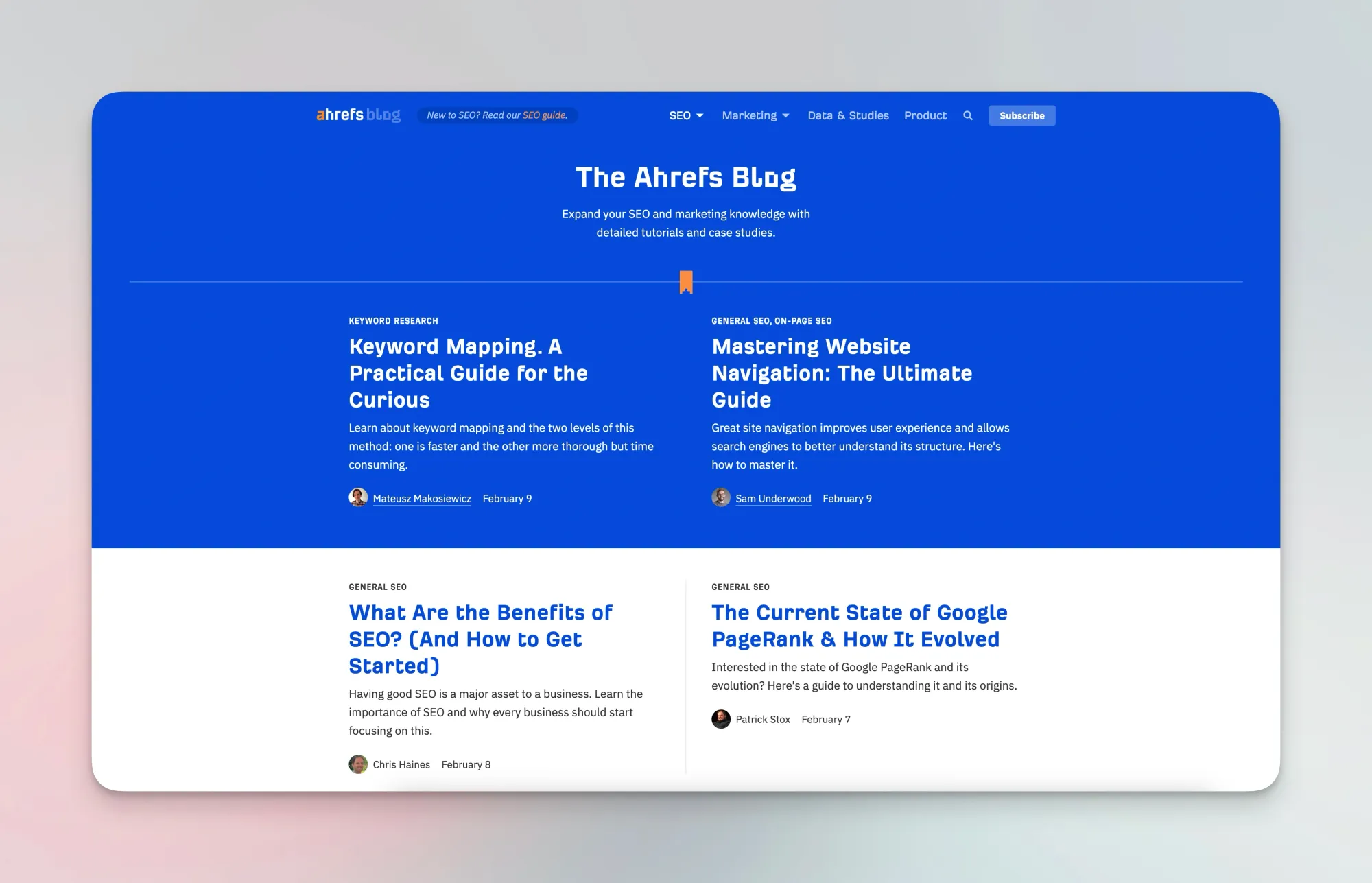
What makes their content so effective is that by reading it, visitors believe Ahrefs is the only viable solution. Making your audience forget the competition is effectively a license to print money.
Requirements: The most critical part of creating a content strategy like this is ensuring your marketing funnel is built out beforehand. If you don't have a streamlined process to send customers through, then even the best lead-gen content will fall flat.
A marketer with a strong sales understanding can help formulate the path; then, a talented writer and product owner can work together to fill the pipeline.
Type 6: Thought Leadership
What is it: If SEO content aims to answer questions that are part of a larger conversation, thought leadership content seeks to spark that conversation. Until recently, most TL pieces were paywalled on a website or reserved for email newsletters.
But over the last few years, they've gained momentum — especially in highly competitive spaces where companies want to differentiate themselves.
Example: One of my favorite thought leadership publishers is the team at Collab Fund.
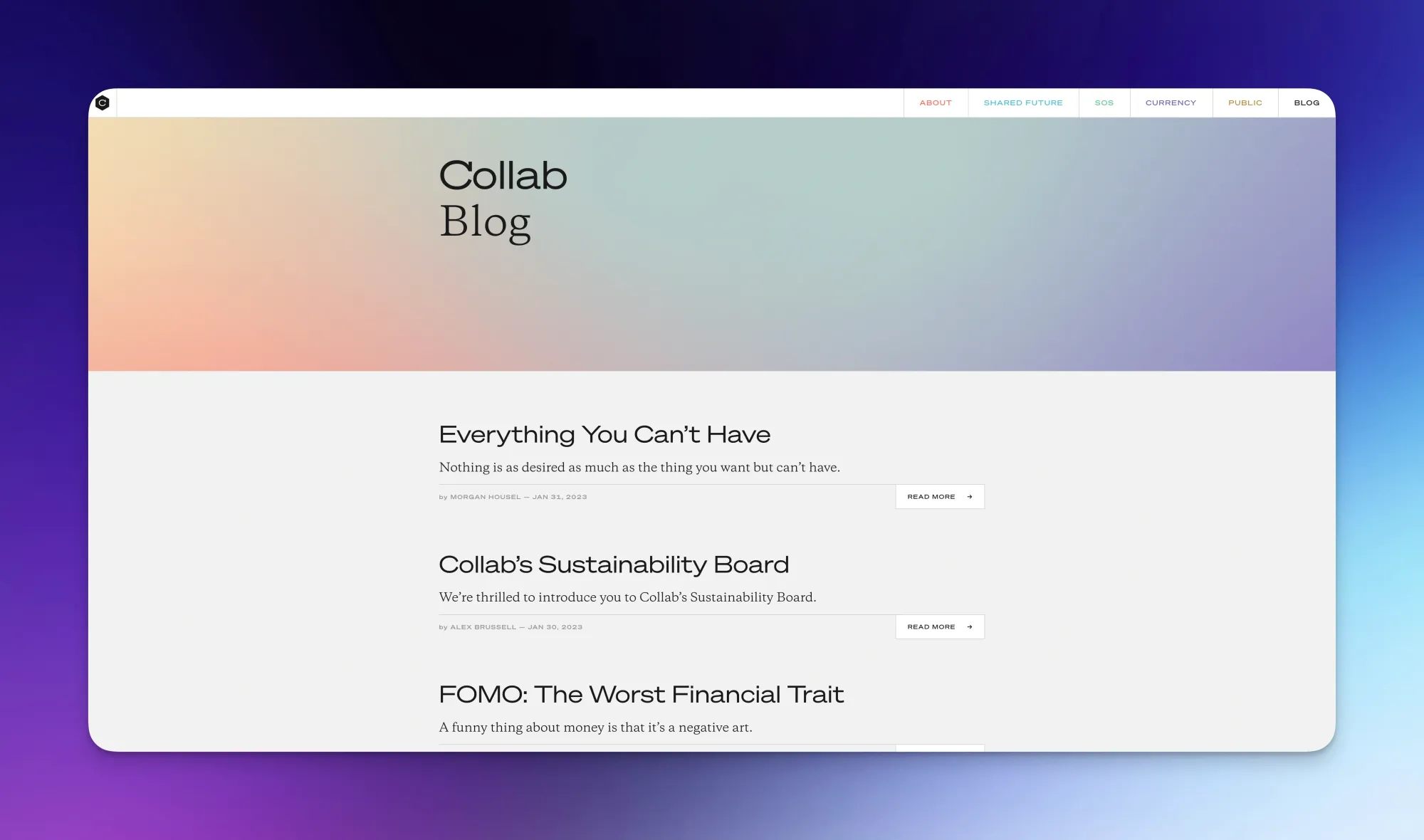
Financial blogging is arguably the most competitive niche, so rather than dive into that red ocean, they chose to fill their reservoir with insightful, analytical, and, at times, controversial takes on money. Thousands of readers search out their content because they know nothing else like it exists.
Requirements: Excuse the bluntness, but you must have original ideas to do thought leadership content well.
This means leaning on your senior leadership (they usually won’t do the actual writing, but will communicate their ideas to marketers who will turn them into articles); or hiring a personality who can align with your brand and punch well above their weight class. Collab Fund’s primary writer happens to be Morgan Housel, author of The Psychology of Money — a book that has sold over 2 million copies to date.
Type 7: Curation
What is it: The final type of blog we'll cover are those that specialize not in producing original content but in finding, collecting, and delivering the best available.
You can think of curation blogs as round-ups or summaries that save readers the time and energy of scouring the web themselves. Many non-marketers overlook this type because they undervalue how much trust is built by becoming the source of great ideas.
Example: Many businesses in the food sector shine at this format, including The Recipe Critic.
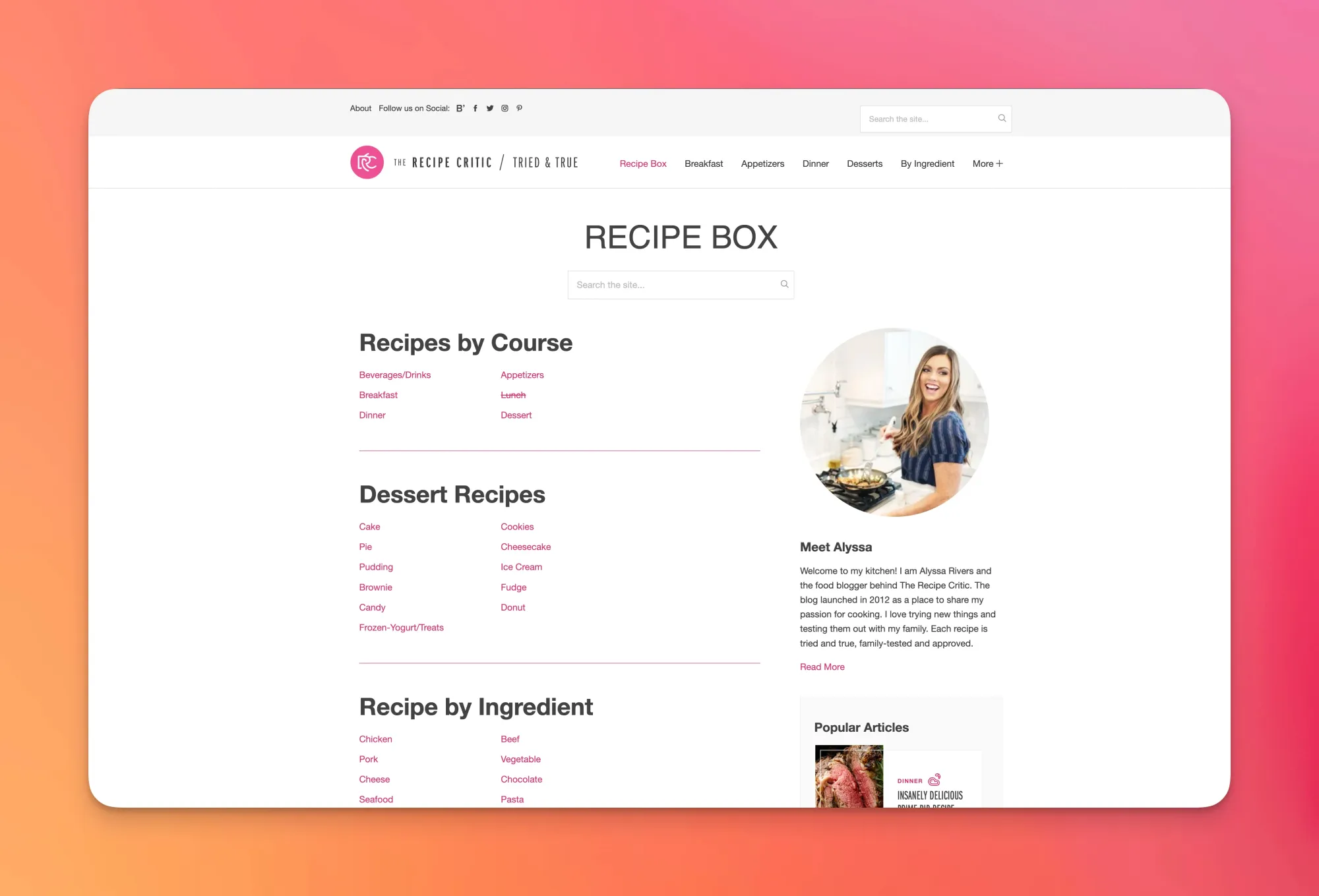
In their curation posts, they link to both internal and external recipes that satisfy a searcher's intent. Readers get the benefit of multiple options in a single article rather than browsing dozens to find what they're looking for.
Requirements: This is an excellent strategy for smaller marketing teams who don't have the resources or bandwidth to produce an extensive library of original content. Although curating is a labor-intensive process, some of this can be hired out to specialized freelancers. Plus, it gives you a perfect platform to highlight your content when you have it to share.
There is no one right way to blog for business
Content strategy is a malleable discipline meant to fit the unique needs of a business, no matter its product, size, or goals. The seven options mentioned above are all excellent places to begin.
Start your blog with what you have, and you'll be surprised by how fast it can grow from there.

